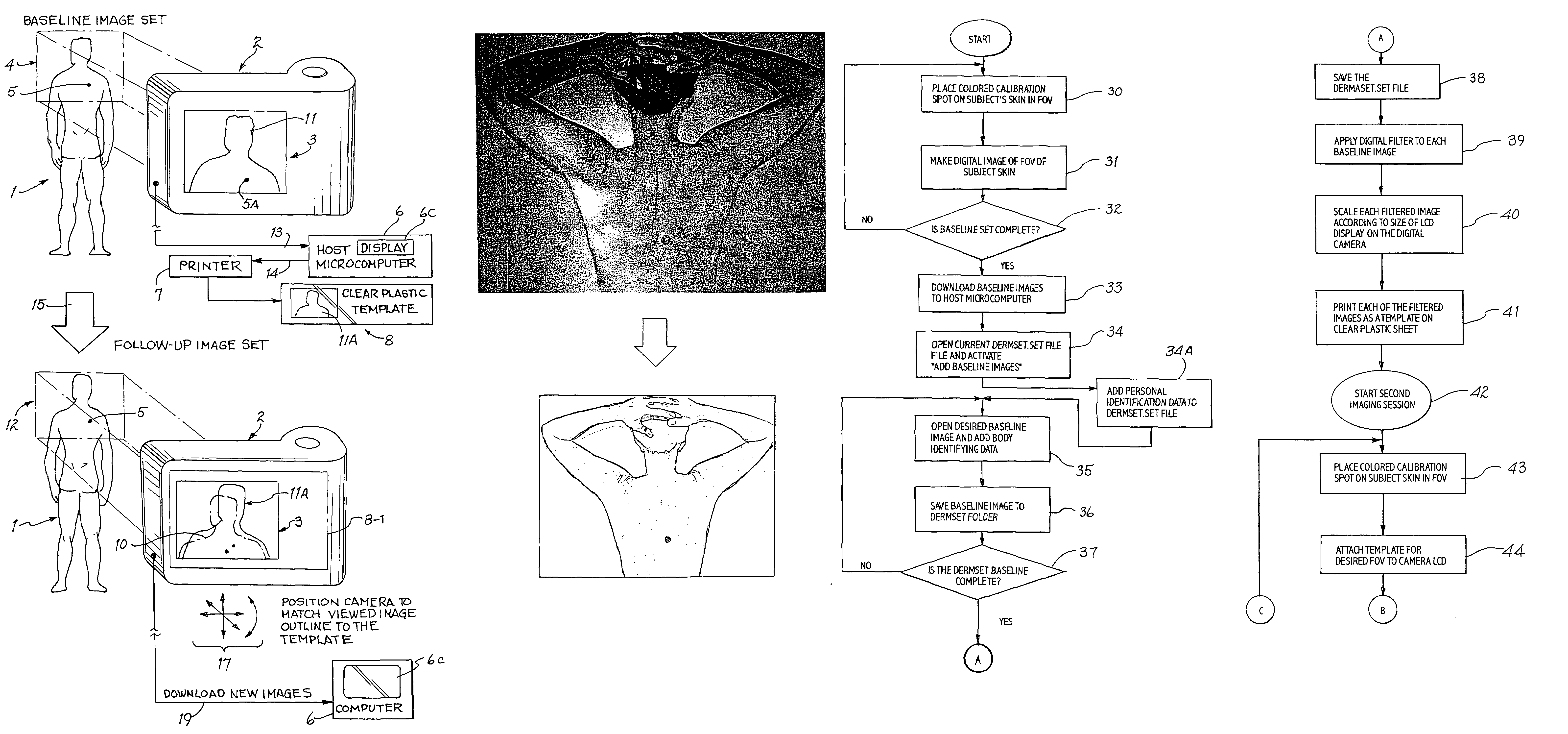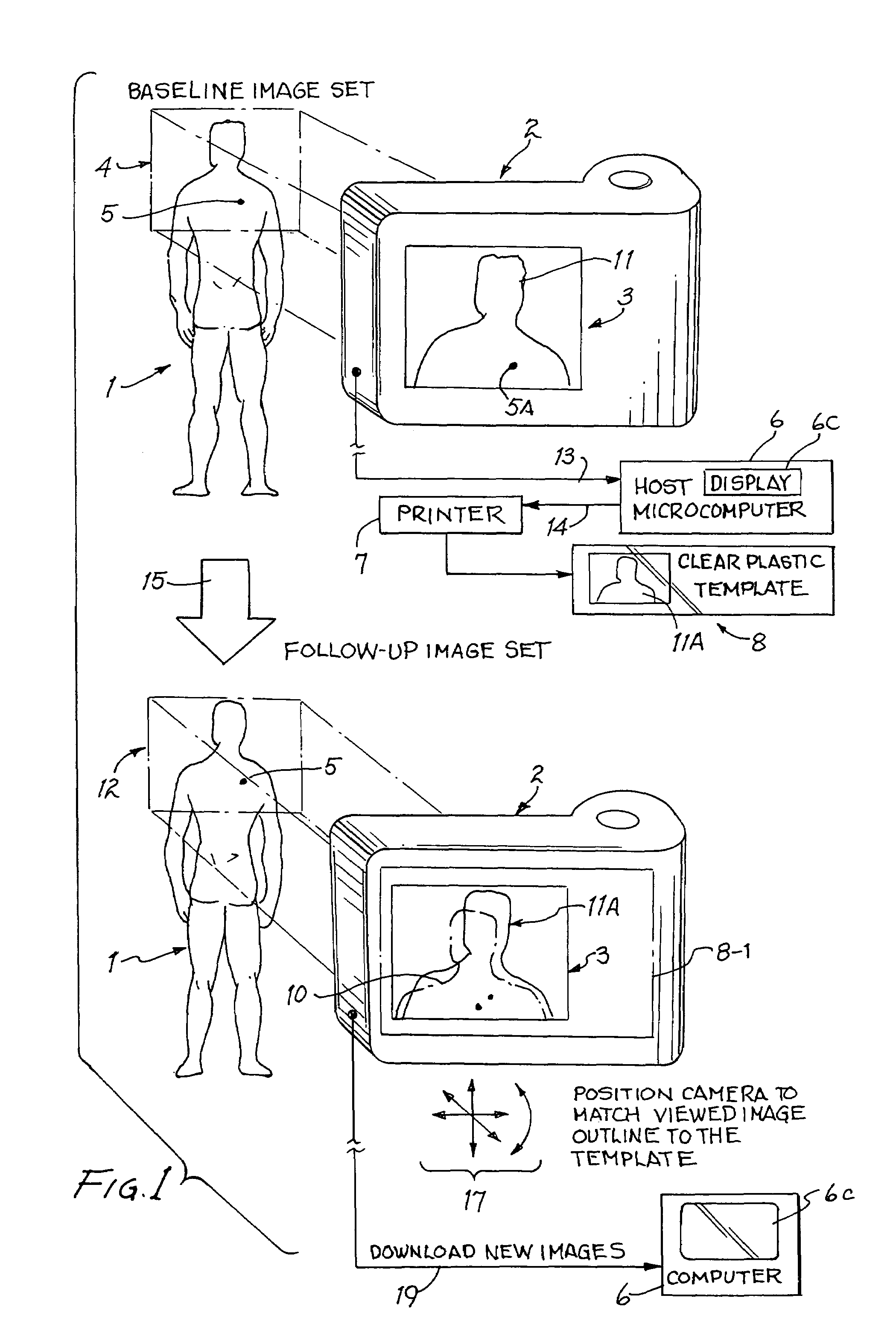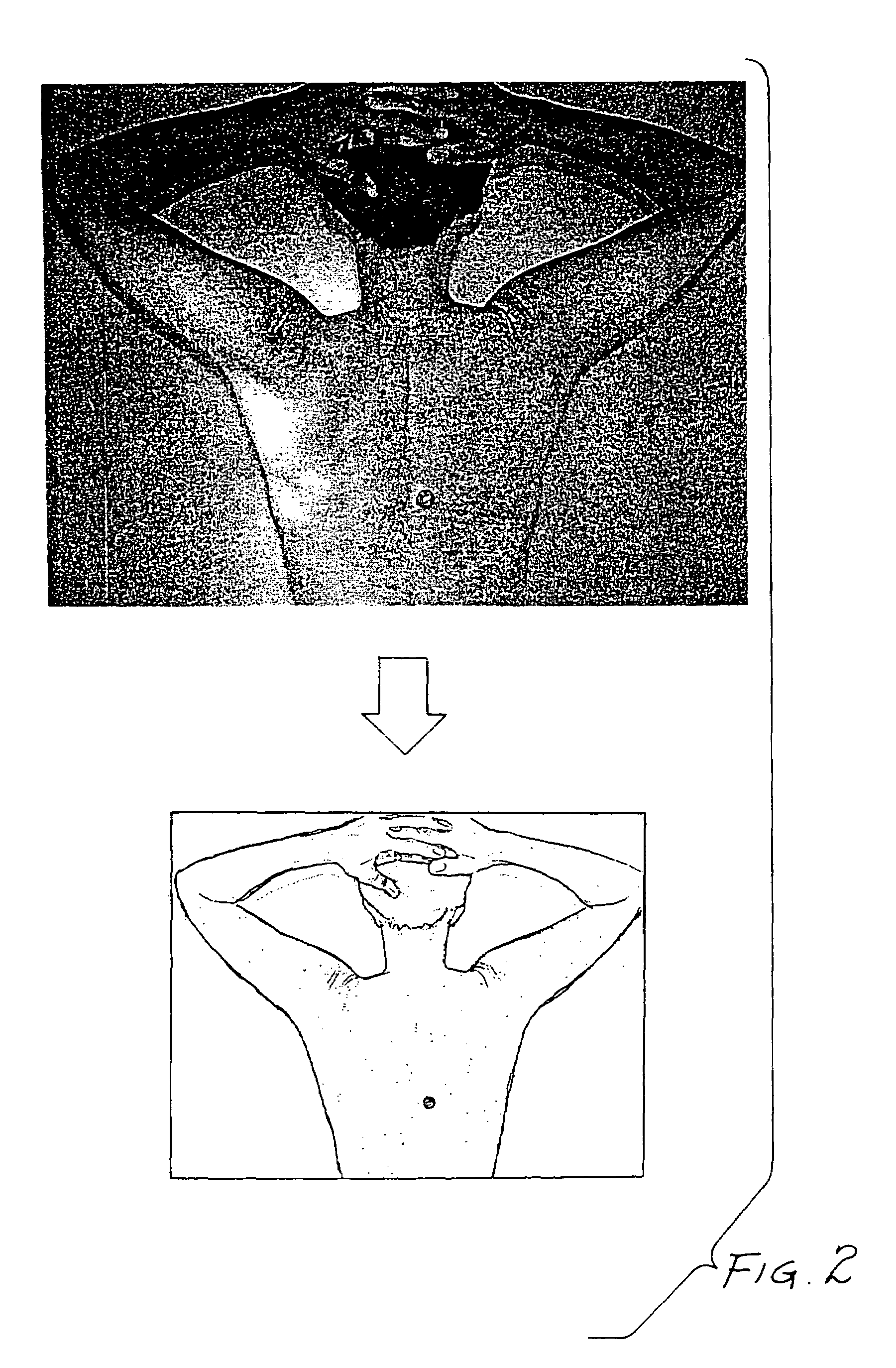Digital skin lesion imaging system and method
a skin lesion and digital technology, applied in the field of computer imaging system and method, can solve the problems of small cancers that are often fatal, the physician observing the lesion usually does not have prior knowledge, and the difficulty of detecting early changes in the size of skin lesion, etc., and achieve the effect of convenient us
- Summary
- Abstract
- Description
- Claims
- Application Information
AI Technical Summary
Benefits of technology
Problems solved by technology
Method used
Image
Examples
Embodiment Construction
[0026]In attempting to solve the above mentioned problems regarding clinical use of the system described in our above-mentioned U.S. Pat. No. 6,427,022, we found that we could make large-format images with improved, inexpensive digital cameras which are now available instead of using a film camera, although the problem of precise registration / alignment of baseline images and current images to be alternately displayed nevertheless remained unsolved.
[0027]FIG. 1 shows how one of the skin areas of a subject 1 are photographed using an ordinary digital camera 2 having an LCD viewfinder display 3 in order to acquire one of a set of “baseline images” for subject 1. The field of view (FOV) of digital camera 2 is indicated by a rectangle 4 which encompasses the head and shoulders of subject 1. An adhesive-backed blue circular calibration disk 5 having a precisely known diameter may be attached to the skin of subject 1 within the field of view 4. (Alternatively, the calibration disk 5 can be...
PUM
 Login to View More
Login to View More Abstract
Description
Claims
Application Information
 Login to View More
Login to View More - R&D
- Intellectual Property
- Life Sciences
- Materials
- Tech Scout
- Unparalleled Data Quality
- Higher Quality Content
- 60% Fewer Hallucinations
Browse by: Latest US Patents, China's latest patents, Technical Efficacy Thesaurus, Application Domain, Technology Topic, Popular Technical Reports.
© 2025 PatSnap. All rights reserved.Legal|Privacy policy|Modern Slavery Act Transparency Statement|Sitemap|About US| Contact US: help@patsnap.com



